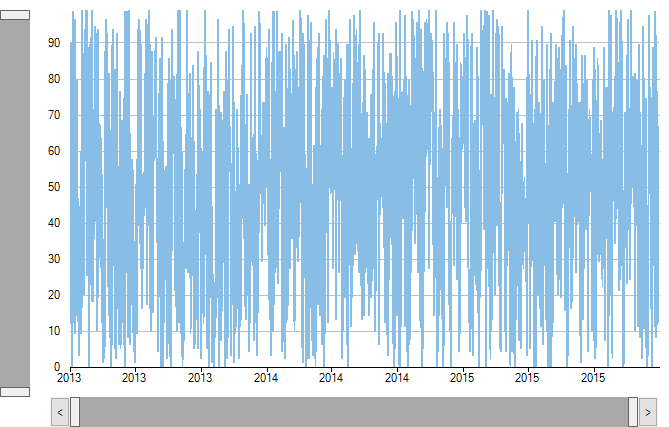The presence of a large number of values or data in charts makes data interpretation difficult, especially in compact user interfaces. Axis Scrollbars solve this problem by letting you easily interpret closely related data within a specific range.
FlexChart allows you to add Axis Scrollbar to primary Axis (X and Y axis) as well as secondary Axis. To add Axis Scrollbar to an axis, you need to create an instance of the C1.Win.Chart.Interaction.AxisScrollbar class. The instance accepts a parameter that is an object of the C1.Win.Chart.Axis class type. In other words, you need to pass an Axis object while creating the AxisScrollbar instance to display the scrollbar for an axis.
The AxisScrollbar class provides the Maximum and the Minimum property to set the maximum and the minimum possible value of the scrollbar respectively. The class also provides the LowerValue and the UpperValue property to set the lower value and the upper value of the control respectively. The lower and upper values change when the scrollbar is resized or moved. And the ValueChanged event fires when any of the LowerValue or the UpperValue property changes.
To set the horizontal or the vertical orientation of the scrollbar, you can use the Orientation property. When the property changes, the OrientationChanged event fires.
See the following code snippet for reference:
